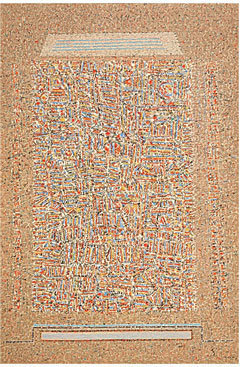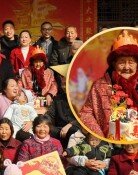Mother’s paintings
Mother’s paintings
Posted December. 08, 2021 07:56,
Updated December. 08, 2021 07:56

There are paintings that capture the feeling of warmth even though it is clear that they are the product of pain. The case in point is Lee Seong-ja’s “Old House of a Thousand Years,” which is currently being exhibited at the National Museum of Modern and Contemporary Art (MMCA) as part of the Lee Kun-hee Collection: Masterpieces of Korean Art. In order to understand why the painting, which depicts the old house she lived in in Jinju, invokes such feelings, one needs to take a close look into her life.
Lee painted the picture in 1961, exactly 10 years after she had left for France, leaving her three boys in Korea after divorce. At first, she missed her boys so much that she could not do anything. “That is why I concentrated on painting even more. I told myself that one stroke of brush is like dressing my boys for school and feeding them,” said Lee.
Paintings were a symbol that replaced her children. Of course, paintings could not replace her children but she had to think that way. In the process, she turned her longing for children into works of art. The tone of her paintings had to be dark and edgy considering her wounded heart, but she had such a warm heart for her children. Her scars hid within herself. This is why her paintings invoke the feeling of warmth. The “Old House of a Thousand Years,” is an abstract painting that makes the audience hard to know what was depicted before looking at the title, but what is certain is that the feeling of warmth created by tens of thousands of layers of brushes was her love for her children. The reason she did not acquire French nationality was because she did not want to turn her back on the country where her children live in. “Because my kids are in Korea,” said Lee.
Lee was under the circumstances, where most people would fall apart, but she was saved by art. Poet Seo Jung-joo said the painting by Lee looks like a woven mat or a rice planting field. It was a sharp depiction not only of the exterior features of the painting but also of the painter’s psychology behind it. In fact, the painter took care of the painting like she actually weaves a mat or plants rice. “Once the painting is completed, it will become my son,” Lee said. Every stroke of brush was a sincere prayer and the prayer was answered by art.







